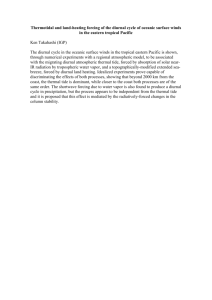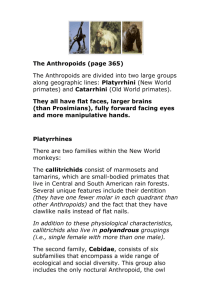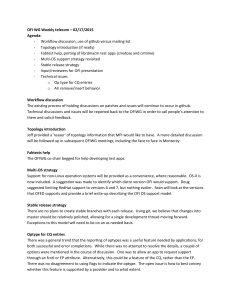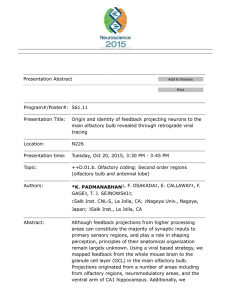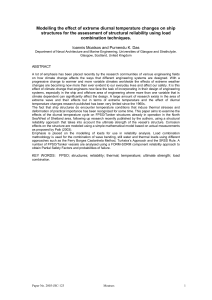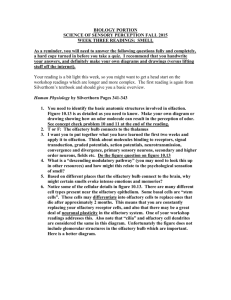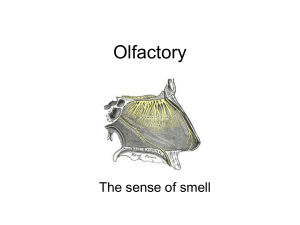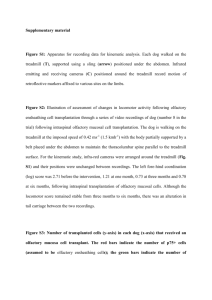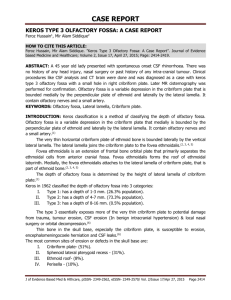Osteological Evaluation of Visual Acuity and Olfactory Function in
advertisement
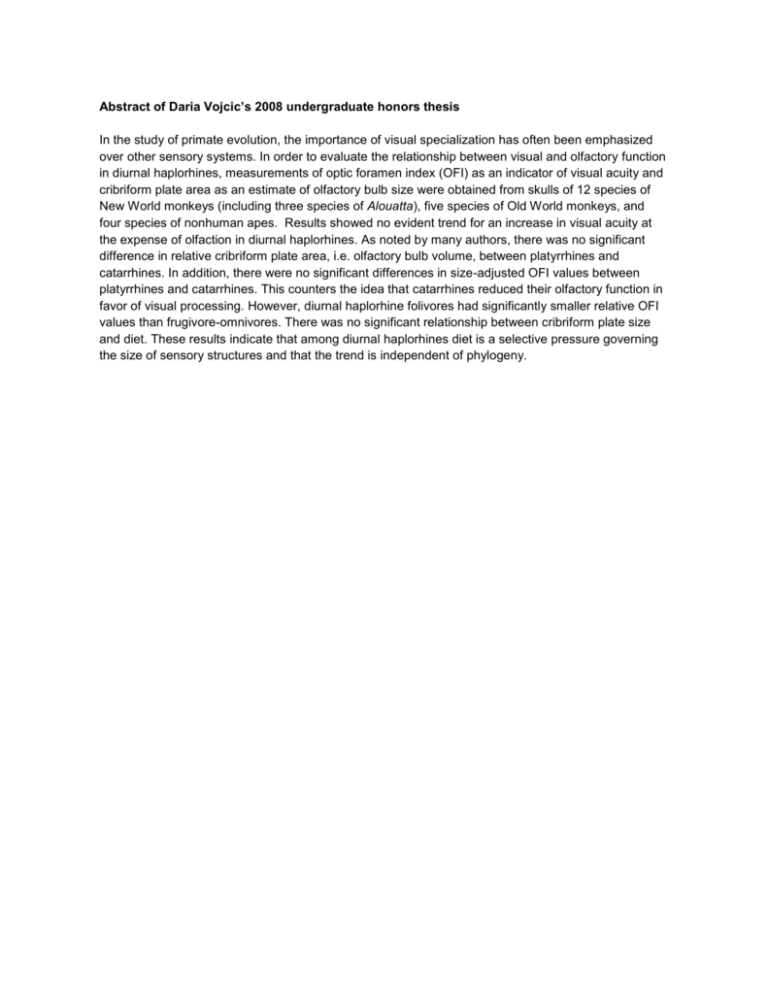
Abstract of Daria Vojcic’s 2008 undergraduate honors thesis In the study of primate evolution, the importance of visual specialization has often been emphasized over other sensory systems. In order to evaluate the relationship between visual and olfactory function in diurnal haplorhines, measurements of optic foramen index (OFI) as an indicator of visual acuity and cribriform plate area as an estimate of olfactory bulb size were obtained from skulls of 12 species of New World monkeys (including three species of Alouatta), five species of Old World monkeys, and four species of nonhuman apes. Results showed no evident trend for an increase in visual acuity at the expense of olfaction in diurnal haplorhines. As noted by many authors, there was no significant difference in relative cribriform plate area, i.e. olfactory bulb volume, between platyrrhines and catarrhines. In addition, there were no significant differences in size-adjusted OFI values between platyrrhines and catarrhines. This counters the idea that catarrhines reduced their olfactory function in favor of visual processing. However, diurnal haplorhine folivores had significantly smaller relative OFI values than frugivore-omnivores. There was no significant relationship between cribriform plate size and diet. These results indicate that among diurnal haplorhines diet is a selective pressure governing the size of sensory structures and that the trend is independent of phylogeny.
